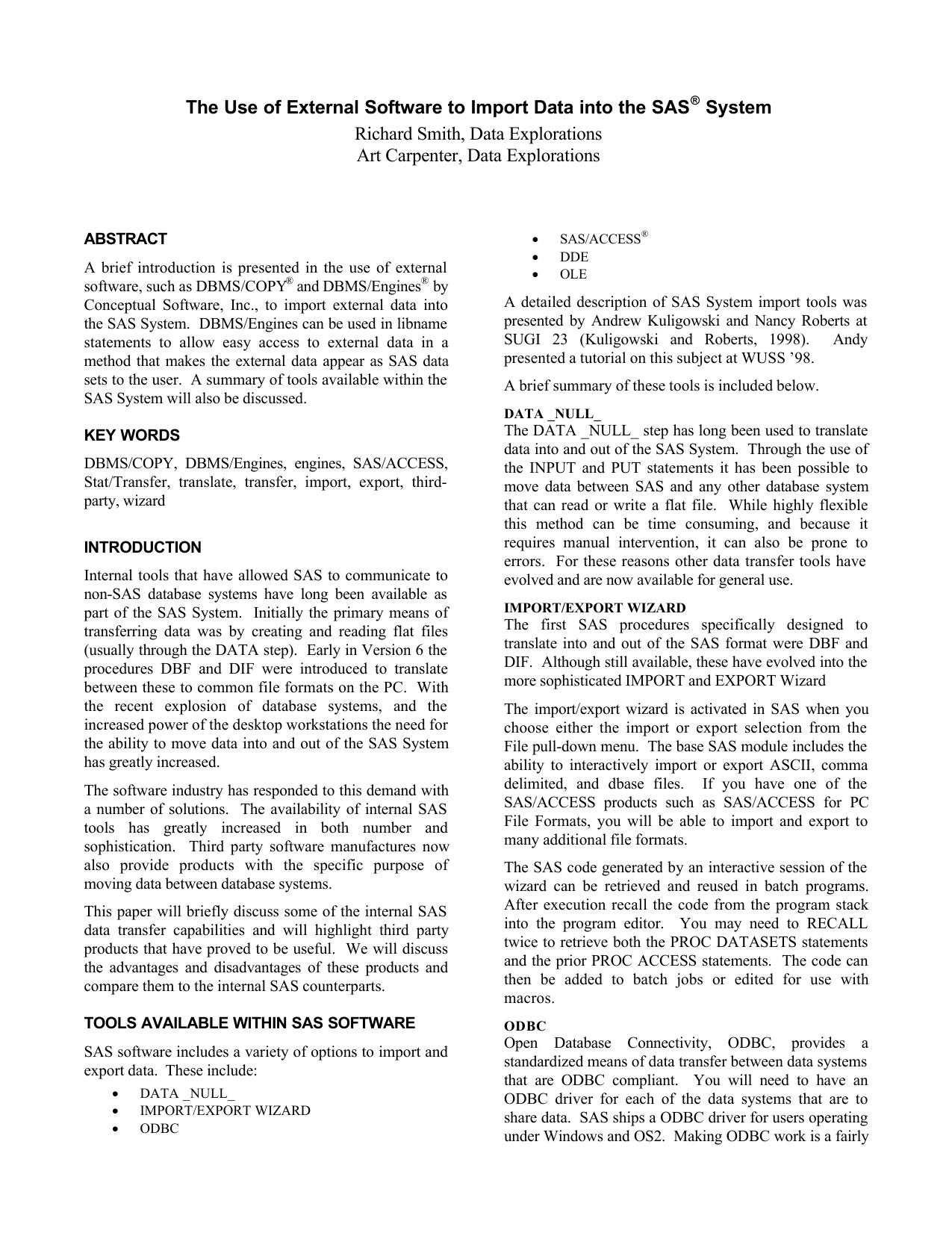
If you have saved the matrix, the default path for the files will be the same as the path of the saved matrix. The default filenames will be "export.txt" for the data file, "export.dic" for the export dictionary file, and "export.sas" for the SAS code file. If you have not saved the matrix, the default path for the files will be the same as the user variables path specified on the Preferences dialog. Use the Browse button or type in the fields to specify your own names and directories. When the Export dialog first appears, default name and directories for each file will be presented.

You may also choose to output a third file containing SAS code that reads in the text data file.

The format description of the data file is written to a second text file, the export dictionary file. To work with SAS, Stata, and other formats try Part 2.Exported SEER*Stat results are stored in an ASCII text data file. Try this interactive course: Importing Data in R (Part 1), to work with csv and xlsx files in R. (To practice importing Stata data with the foreign package, try this exercise.) From systat # character variables are converted to R factors (To practice importing SPSS data with the foreign package, try this exercise.) From SAS # last option converts value labels to R factors Mydata <- spss.get("c:/mydata.por", =TRUE) (To practice, try this exercise on importing an Excel worksheet into R.) From SPSS Mydata <- read.xlsx("c:/myexcel.xlsx", sheetName = "mysheet")

Mydata <- read.xlsx("c:/myexcel.xlsx", 1) # read in the first worksheet from the workbook myexcel.xlsx The first row should contain variable/column names. Alternatively you can use the xlsx package to access Excel files. One of the best ways to read an Excel file is to export it to a comma delimited file and import it using the method above. (To practice importing a csv file, try this exercise.) From Excel Mydata <- read.table("c:/mydata.csv", header=TRUE, # note the / instead of \ on mswindows systems

# first row contains variable names, comma is separator Example of importing data are provided below. See the Quick-R section on packages, for information on obtaining and installing the these packages. For SPSS and SAS I would recommend the Hmisc package for ease and functionality. For Stata and Systat, use the foreign package.


 0 kommentar(er)
0 kommentar(er)
